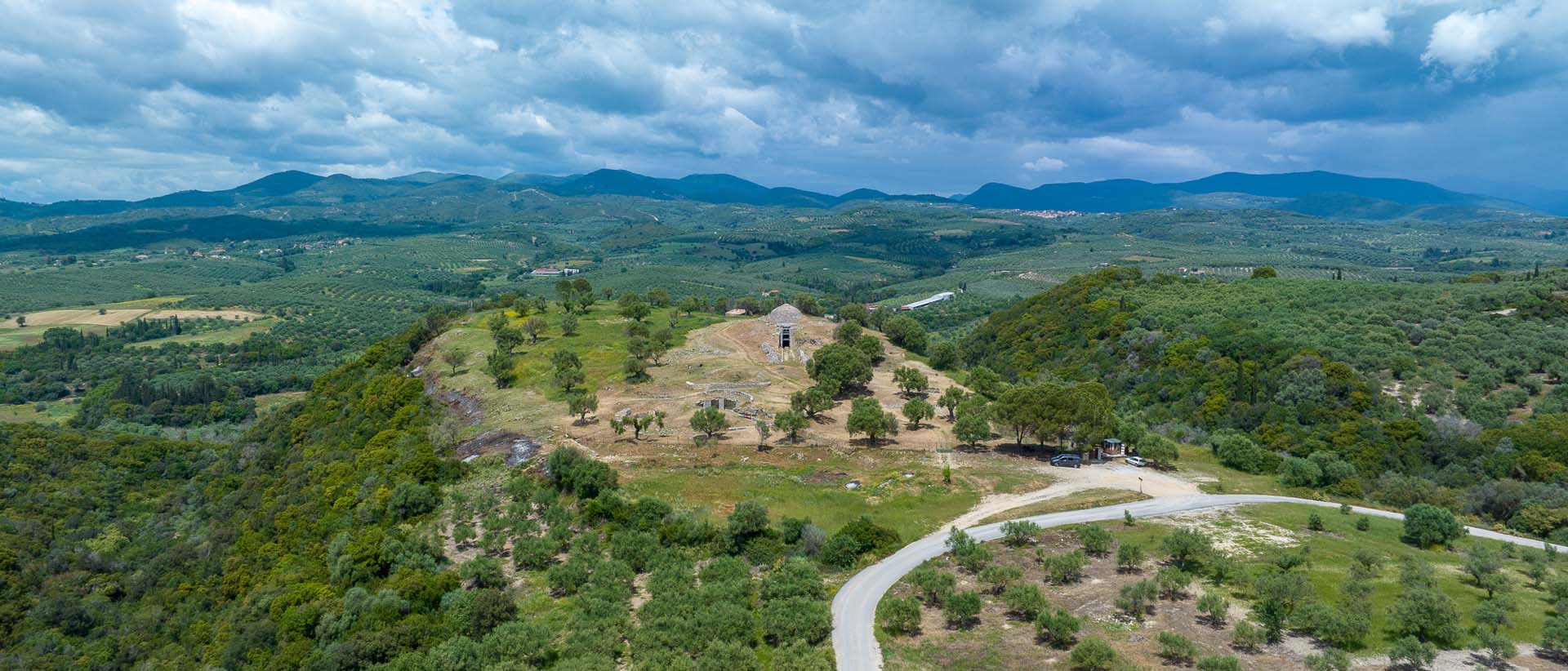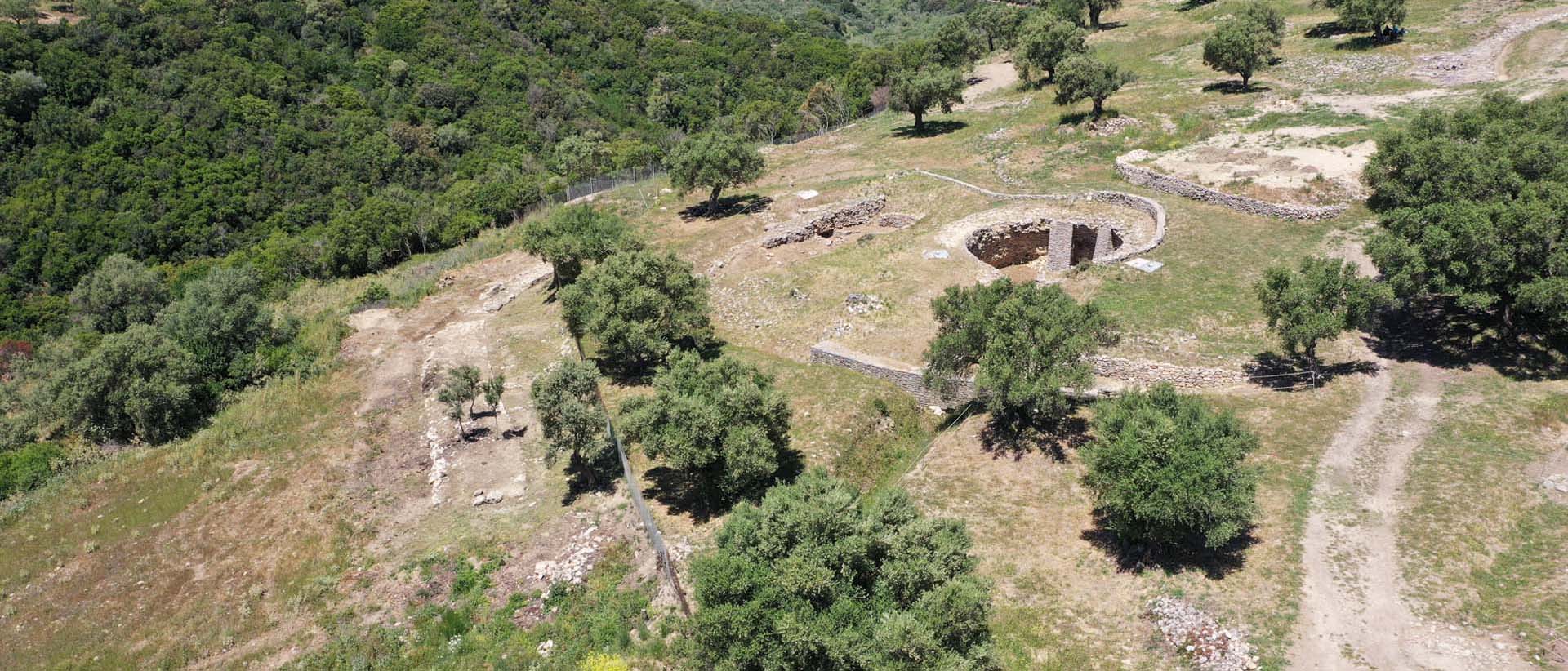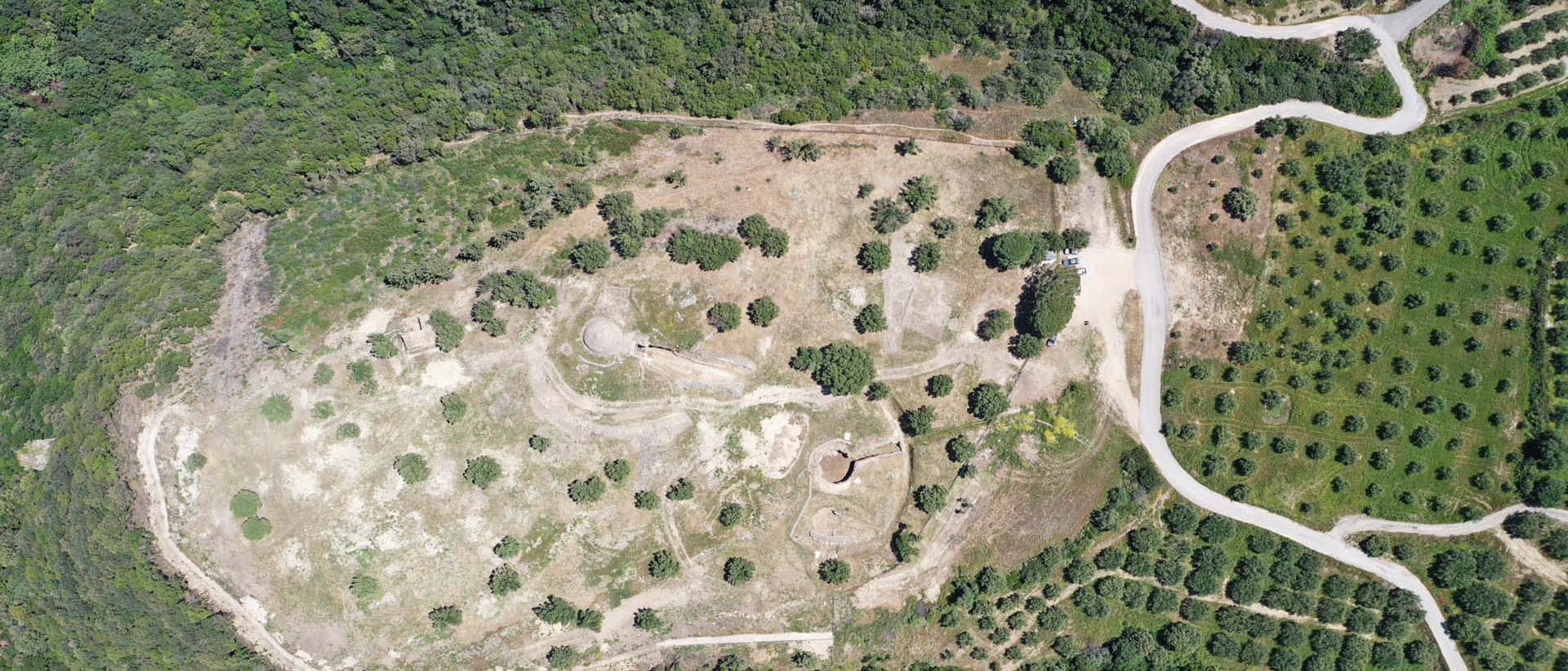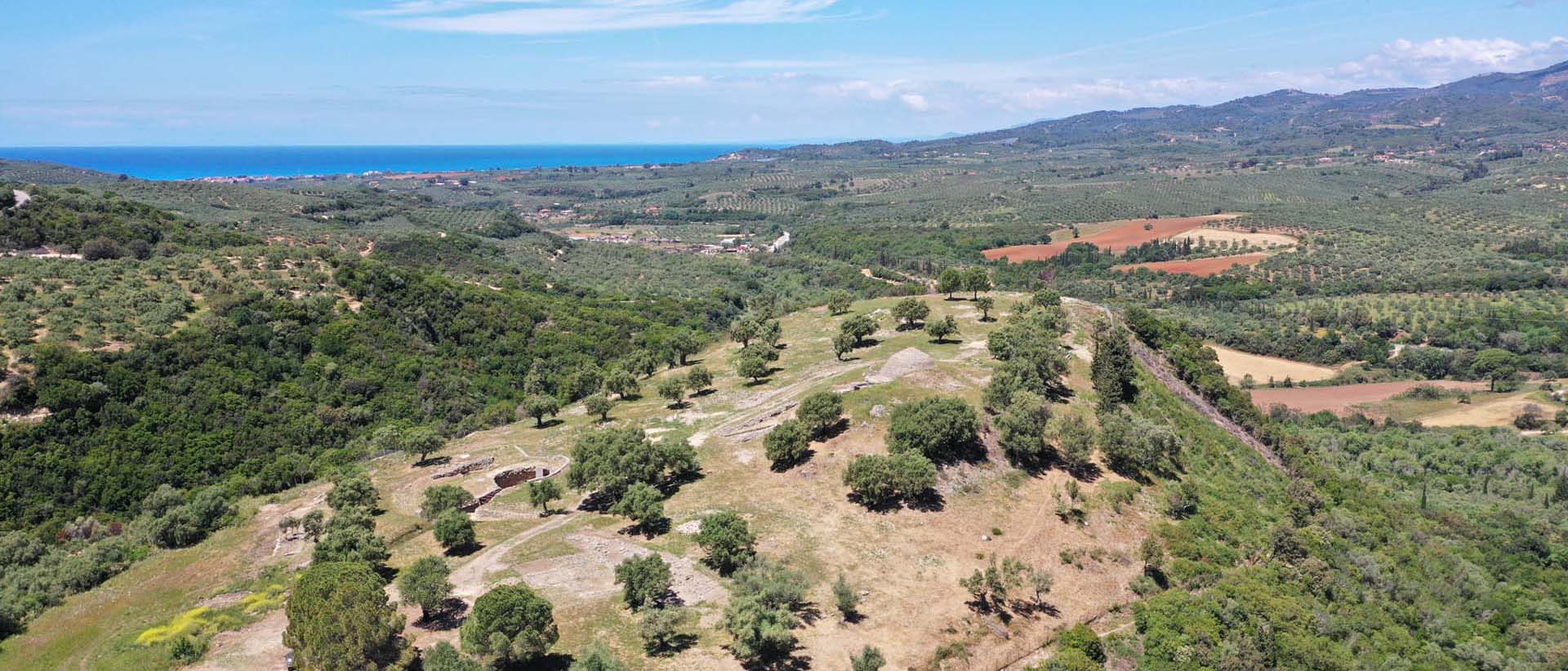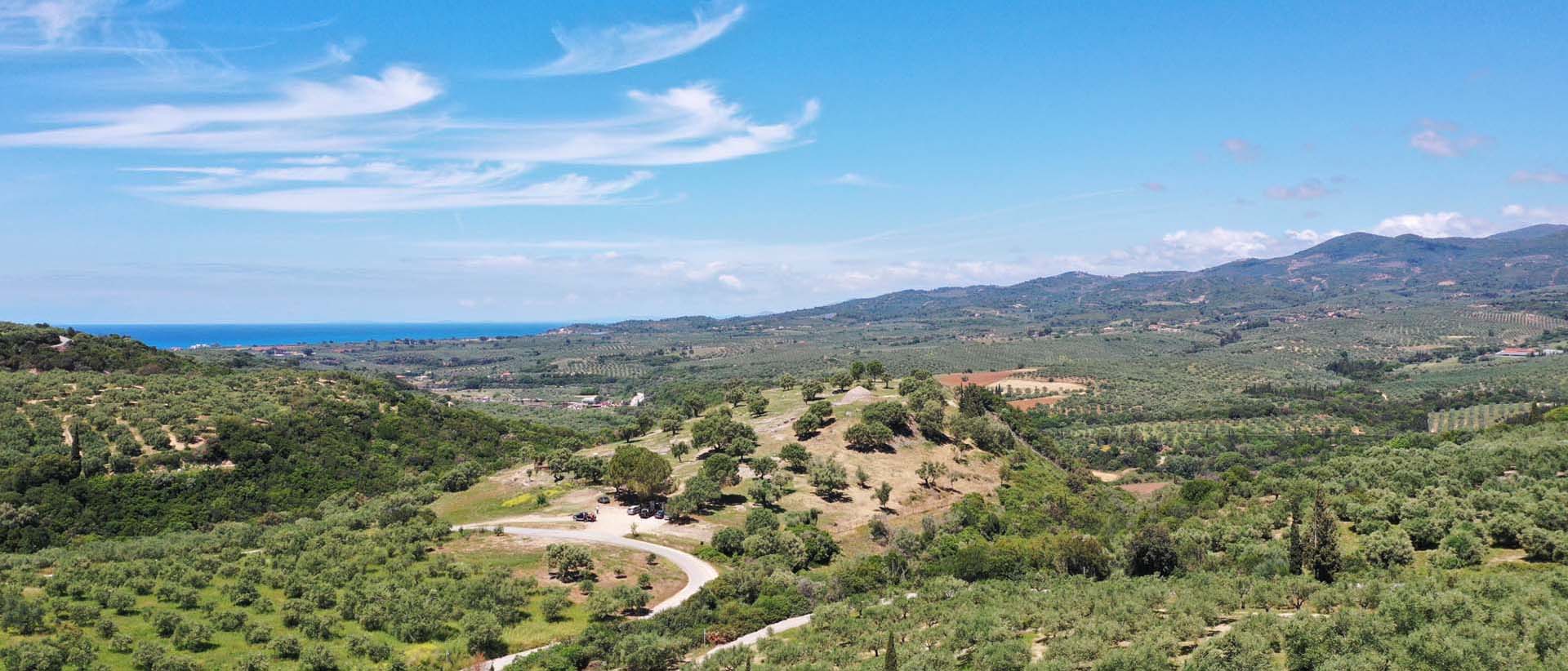
Peristeria

The hill of Peristeria is located at a crucial position, 8 km northeast of Kyparissia and 5 km east of the northwestern shores of Messenia. Thanks to the archaeological research conducted by Spyridon Marinatos and Georgios Korres during the 1960s and 1970s, it was recognized as one of the most significant Late Bronze Age centers in mainland Greece and has been characterized as the “Mycenae of the western Peloponnese.” Peristeria reached its peak during the early Mycenaean period (17th/16th centuries BC) and continued to thrive until the 15th century BC. During this period, the hill was fortified to the south with a wall and the settlement expanded, establishing a powerful regional center. This settlement was governed by leading and privileged individuals, who accumulated the wealth of the region and were open to new cultural trends. The prestige and power of local rulers are primarily highlighted by the abundance of elaborate artifacts found mostly in the tholos tombs of the hill.
Ιconography, materials, and technical expertise of the finds, all attest to the widespread use of gold and other imported materials and works of art as commodities of exchange. They illustrate the connections of Peristeria with Crete and other Mycenaean centers in mainland Greece, the broader Mediterranean, and Europe.
Around 1400/1300 BC, Peristeria lost its significance as an administrative center and was reduced to a common settlement. Most likely, the settlement was not smoothly integrated into the sphere of influence of the Palace of Nestor, but instead was succeeded by another Mycenaean center at the location of “Elliniko” in Mouriatada. Evidence of habitation is also found on the hill during the Hellenistic and Roman times.

